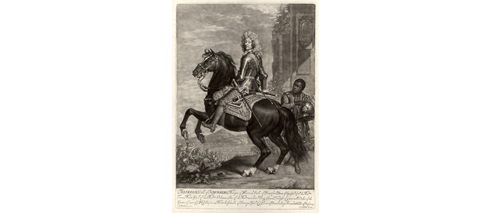Traces in other regions
Duke of Schomberg

Frederick Schomberg, once called “the ablest soldier of his age”, was a key figure at the Battle of the Boyne in 1690.
Schomberg (originally Friedrich Hermann von Schönberg) was born in Heidelberg in 1615. His military career began in 1633 and lasted for over half a century of service in the Swedish, French, Dutch and English armies. He spoke German, Latin, French, Dutch, English and Portuguese, fought for the Dutch republic, commanded French and English troops in Portugal, and was general-in-chief of Brandenburg.
When the Protestant William of Orange invaded England, Schomberg was at his side. In 1689, now Duke of Schomberg, he was appointed commander-in-chief in Ireland, the main battleground for William’s war with James II, the Catholic king he had deposed. At the crucial showdown at the Boyne in 1690, Schomberg commanded the Williamite centre. While rallying his troops, he was killed by a shot from a musket.
His loss temporarily turned the battle in James’s favour, but William’s forces ultimately won a historic victory. Schomberg, who is buried in St Patrick’s Cathedral in Dublin, is still seen as a hero by some Irish Protestants.
Visitor Information:
The Battle of the Boyne Visitor Centre
Oldbridge Drogheda
Co. Meath
IRELAND +353 (0)41 980 9950
battleoftheboyne@opw.ie